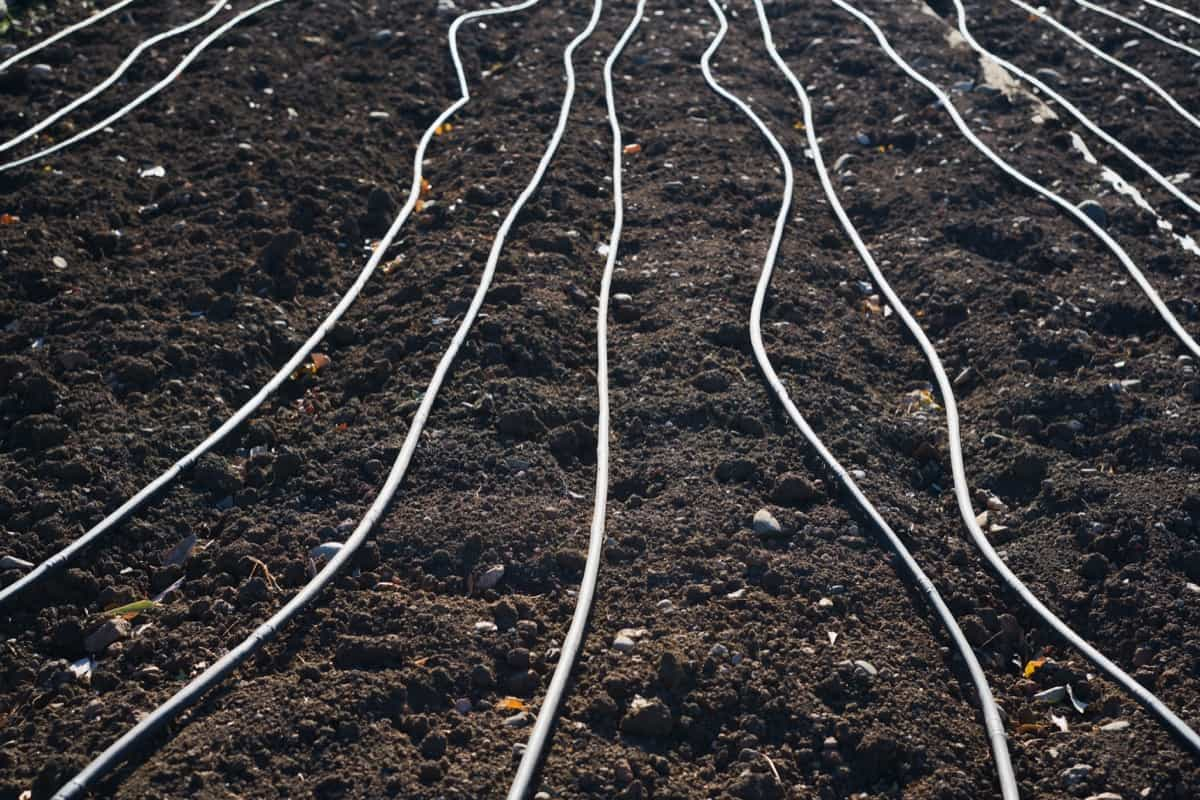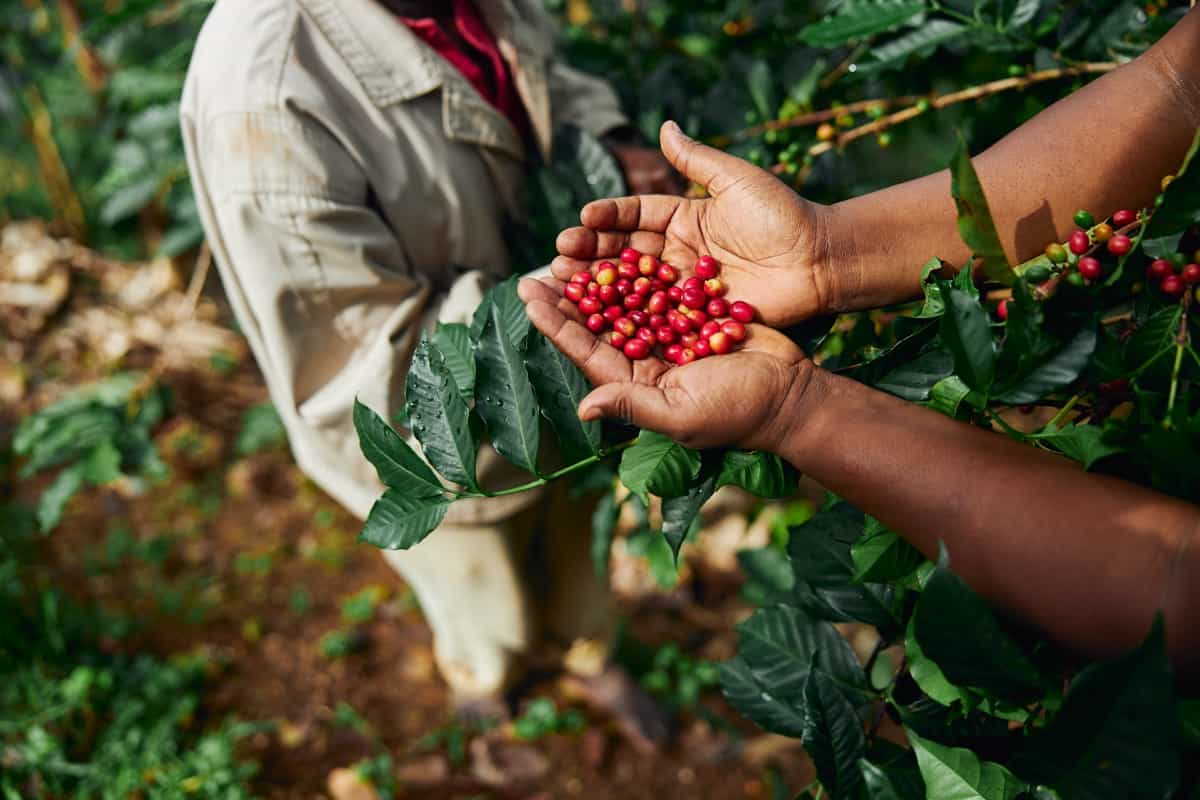Drip irrigation has emerged as a pivotal technology in modern agriculture, significantly enhancing water efficiency and crop yield. As the coffee industry grapples with fluctuating climatic conditions and water scarcity, understanding the initial investment and potential subsidies for drip irrigation becomes imperative. The initial investment for drip irrigation in coffee plantations involves various components, such as equipment, labor, and infrastructure.

Drip systems consist of pipes, filters, valves, and emitters, each contributing to the overall cost. Additionally, factors like land topography, soil type, and the scale of the plantation influence installation expenses. The cost per acre ranges from Rs. 1,30,000 to Rs. 1,70,000, depending on factors such as the size of the plantation, terrain, and the type of drip system chosen.
Evaluate the Cost of Drip Lines and Emitters for Coffee Fields
The cost of drip lines and emitters for coffee fields varies based on factors like brand, material, and specifications. On average, high-quality drip lines can cost around Rs. 8 to Rs. 12 per meter, while emitters may range from Rs. 2 to Rs. 5 per unit. For a standard-sized coffee field covering 1 acre (approximately 4047 square meters), the total cost for drip lines and emitters could range from Rs. 18,000 to Rs. 25,000. However, prices may fluctuate based on specific requirements and market conditions, necessitating a detailed quote from suppliers for accurate budgeting in coffee cultivation.
Analyze the Expense of Filters and Pressure Regulators in Drip Irrigation Systems
The expense of filters and pressure regulators in drip irrigation systems per acre in Rs. depends on various factors such as the type and quality of equipment, local market prices, and specific agricultural needs. Generally, basic filters and regulators may cost between Rs. 10,000 and Rs. 15,000 per acre, while more advanced and durable models can range from Rs. 25,000 to Rs. 30,000 per acre.
It’s crucial to consider long-term benefits, as higher-quality components can enhance system efficiency and reduce maintenance costs over time. Additionally, factors like water quality and crop type play a role in determining the appropriate filtration and pressure regulation requirements.
Estimate the Cost of Automation and Control Systems
The cost of automation and control systems for drip irrigation in coffee cultivation varies based on complexity. For a basic system with simple sensors and manual controls, the estimate is around Rs. 25,000 to Rs. 30,000. A moderately complex system, integrating sensors for soil moisture, temperature, and automated valves, could range from Rs. 40,000 to Rs. 60,000.
In case you missed it: Coffee Plant Leaves Turning Brown, Yellow, and Drooping: How to Fix with Coffee Plant Care

For highly sophisticated systems with advanced data analytics and remote monitoring capabilities, the cost may exceed Rs. 1,20,000. Factors such as farm size, topography, and specific automation requirements will influence the final cost, ensuring efficient water management in coffee cultivation.
Assess the Price of Pumps and Pumping Stations
Pumps and pumping stations are integral components of drip irrigation systems in coffee farming, responsible for delivering water from sources such as wells or reservoirs to the fields. The cost of pumps varies based on factors such as capacity, efficiency, and the depth of the water source. Generally, prices can range from Rs. 20,000 to 25,000 or more per acre, depending on the specific requirements of the coffee plantation.
Explore the Cost of Fertilizer and Nutrient Injection Systems
Drip irrigation systems can be enhanced with the integration of fertilizer and nutrient injection systems, providing an efficient means of delivering essential nutrients directly to coffee plants. The cost of these systems varies based on factors such as the type and complexity of injectors, the type of fertilizers used, and the size of the coffee plantation. On average, the cost of a fertilizer injection system for drip irrigation in coffee farming ranges from Rs. 20,000 to 22,000 per acre. This includes the cost of injectors, tanks, control units, and the necessary plumbing.
Calculate the Labor and Installation Costs for Drip Irrigation in Coffee Plantations
Labor and installation costs are significant components when assessing the overall expenses associated with drip irrigation in coffee plantations. The installation process involves skilled labor for tasks such as laying drip lines, installing emitters, setting up pumps, and configuring control units. The labor and installation cost can range from Rs. 18,000 to 25,000 per acre, depending on the complexity of the system and the local wage rates.
Factor the Maintenance and Repair Expenses
Maintenance and repair expenses are essential considerations for sustaining the longevity and effectiveness of drip irrigation systems in coffee farming. Routine maintenance involves tasks such as cleaning filters, inspecting drip lines, and ensuring the proper functioning of emitters and pumps. On average, annual maintenance costs for drip irrigation in coffee plantations can range from Rs. 8,000 to 10,000 per acre, depending on the system’s size and complexity.
In addition to routine maintenance, unforeseen issues or wear and tear may necessitate repairs. Farmers should allocate a portion of their budget for potential repair expenses, with an average annual cost ranging from Rs. 7,000 to 10,000 per acre. Regular inspections and timely repairs are vital for preventing water wastage, maintaining uniform irrigation, and maximizing the system’s efficiency.
Energy Costs Associated with Drip Irrigation in Coffee Cultivation
Drip irrigation systems in coffee cultivation involve the use of pumps to transport water from sources to the fields. Energy costs associated with these pumps contribute significantly to the overall expenses of drip irrigation. The energy consumption depends on the pump’s capacity, efficiency, and the distance water needs to be transported. On average, energy costs for drip irrigation in coffee farming can range from Rs. 5,000 to 15,000 per acre annually.
In case you missed it: Weed Management in a Coffee Plantation: Control with Chemical, Cultural, Mechanical, and IPM Strategies

Drip Irrigation Cost Per Acre for Coffee Plantation
| Item | Cost Range (INR) |
| Drip Lines & Emitters | 18,000 to 25,000 |
| Filters and Pressure Regulators | 10,000 to 15,000 |
| Automation and Control Systems | 25,000 to 30,000 |
| Pumps and Pumping Stations | 20,000 to 25,000 |
| Fertilizer and Nutrient Injection Systems | 20,000 to 22,000 |
| Labor and Installation Costs | 18,000 to 25,000 |
| Maintenance and Repair Expenses | 15,000 to 20,000 |
| Energy Costs | 5,000 to 15,000 |
Government Subsidy for Drip Irrigation in Coffee Plantations
Several governments offer subsidies to encourage sustainable agricultural practices, including the adoption of efficient irrigation systems like drip irrigation for Coffee plantations. The Agriculture and Farmers Welfare (DA&FW) Department is implementing a scheme called “Per Drop More Crop under Pradhan Mantri Krishi Sinchayee Yojana (PMKSY-PDMC)” from 2015-16 in the Country which focuses on water conservation at the farm level through Drip and Sprinkler irrigation systems.
The government provides financial assistance/subsidy at 55% of the indicative unit cost to small and marginal farmers and at 45% to other farmers for drip and sprinkler irrigation installation. The beneficiary bears the remaining cost. However, some States provide additional incentives/top-up subsidies to reduce farmers’ share for the adoption of micro-irrigation.
Compare the Overall Operational Costs of Drip Irrigation vs. Traditional Methods in Coffee Farming
Drip irrigation minimizes water wastage by delivering water directly to the roots of coffee plants, reducing the overall water consumption compared to traditional methods like flood or furrow irrigation. This efficiency can lead to lower water pumping costs and, consequently, reduced energy expenses. Moreover, the precise application of water and nutrients through drip irrigation can contribute to higher crop yields, potentially offsetting the initial investment over time.
In traditional methods, operational costs may include higher labor expenses, increased water usage, and the need for more extensive maintenance due to issues like soil erosion. Drip irrigation’s ability to enhance water efficiency, reduce labor requirements, and improve overall crop health makes it a financially viable option for coffee farmers in the long run. Despite the initial investment, the cost-effectiveness and sustainability of drip irrigation in coffee farming make it a favorable choice for many agricultural practitioners.
In case you missed it: Coffee Tree Fertilization Requirements: Recommendation and Application Process

Conclusion
In conclusion, exploring the cost of drip irrigation per acre for coffee plantations involves a comprehensive understanding of installation expenses, subsidies, and long-term benefits. While the initial investment may seem substantial, potential subsidies can alleviate financial burdens. The efficiency and sustainability of drip irrigation position it as a valuable investment, contributing to optimal water management and enhanced crop yield in coffee farming.
- Feed Your Flock for Less: Top 10 Tips to Save on Chicken Feed
- Ultimate Guide to Ossabaw Island Hog: Breeding, Raising, Diet, and Care
- Hatching Answers: The Top 10 Reasons Your Chickens Aren’t Laying Eggs
- Eggs and Economics: Breaking Down the Cost of Raising Backyard Chickens
- Defend Your Greens: Proven Methods to Keep Iguanas Out of Your Garden
- Ultimate Guide to Cinnamon Queen Chicken: A Comprehensive Guide for Beginners
- Ultimate Guide to California Tan Chicken: Breeding, Raising, Diet, Egg-Production and Care
- Ultimate Guide to Marsh Daisy Chicken: Breeding, Raising, Diet, and Care
- 10 Types of Chicken Farming Businesses You Can Start for Profits